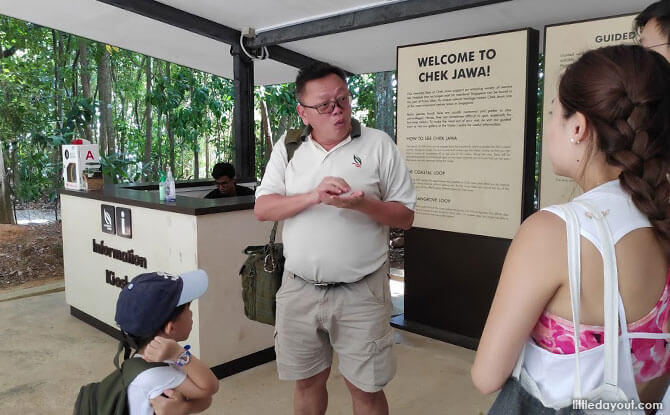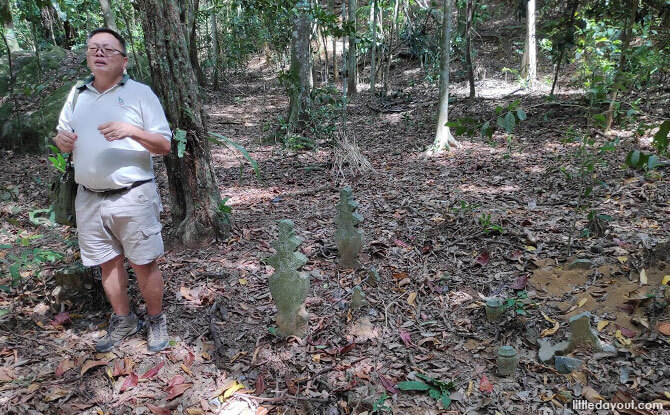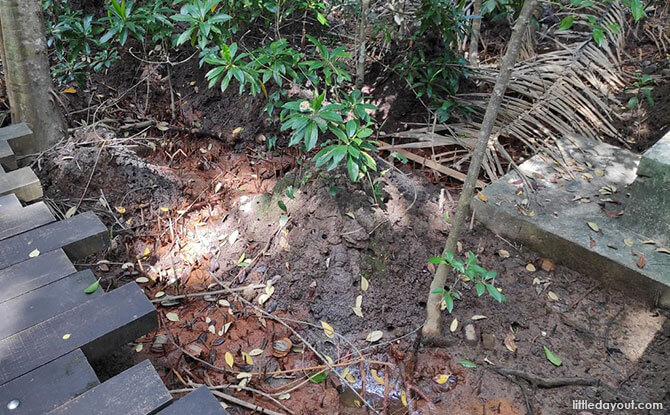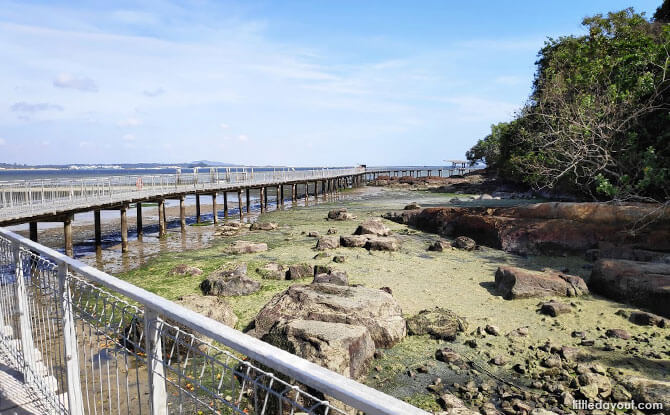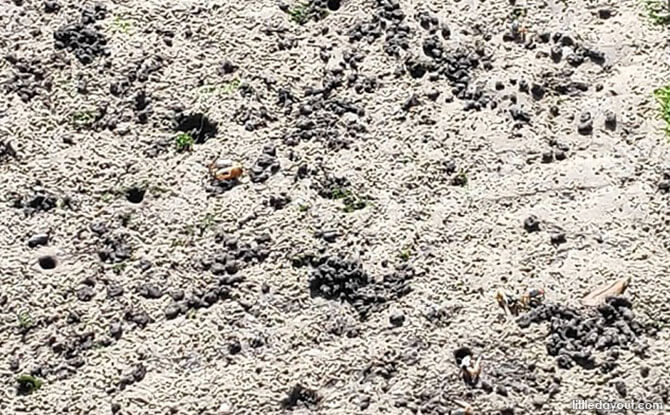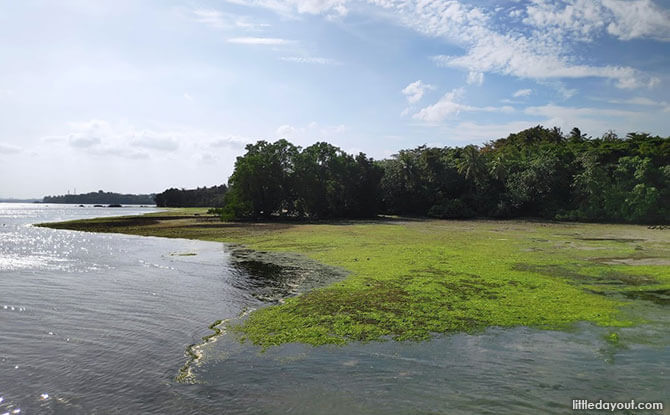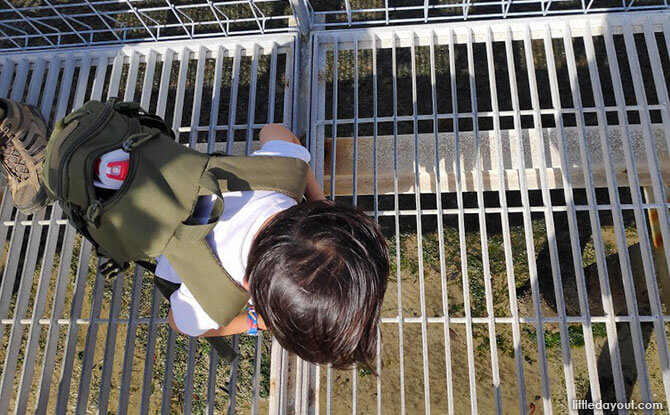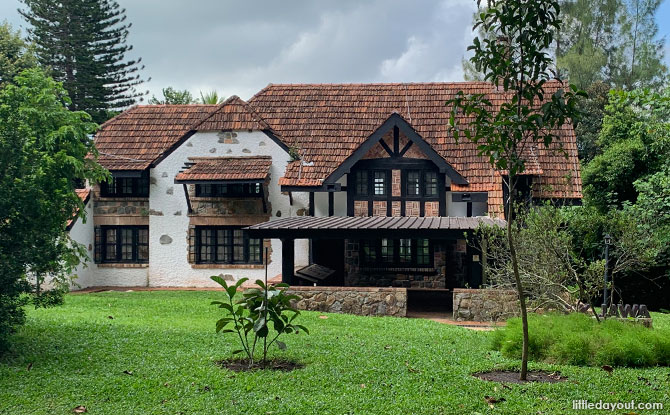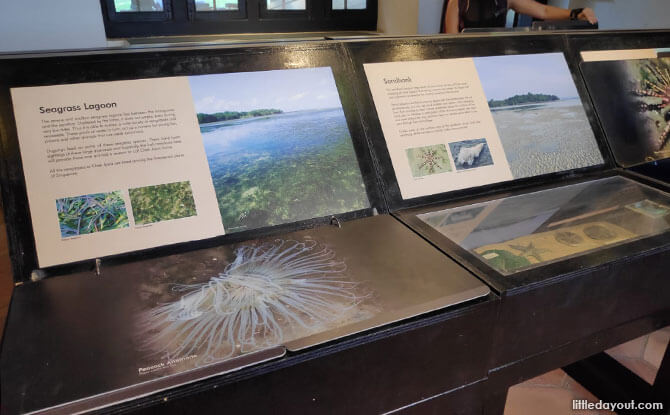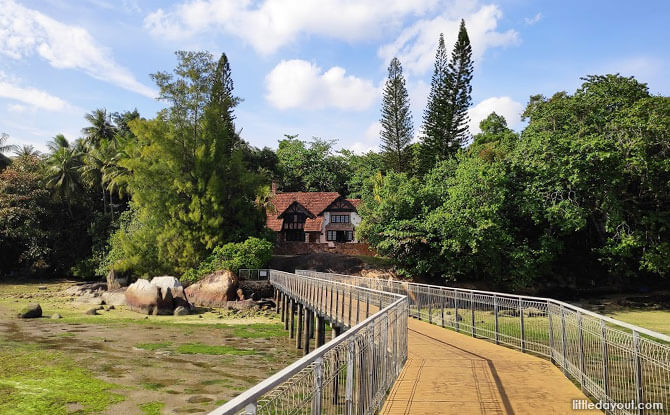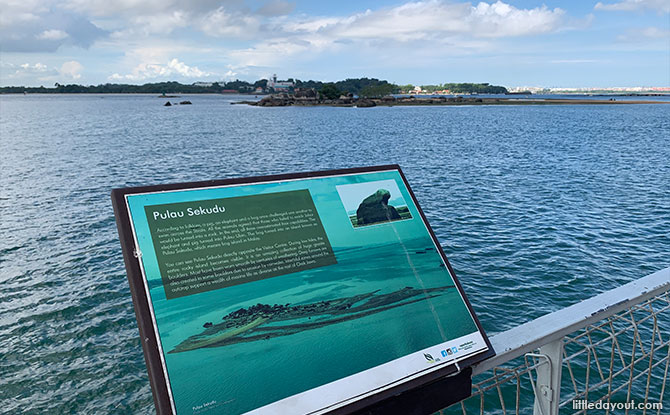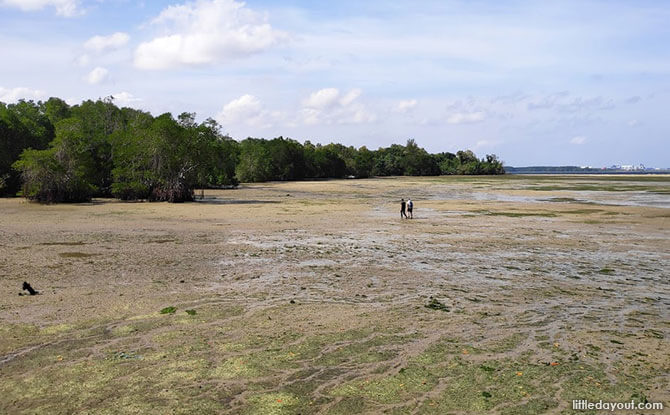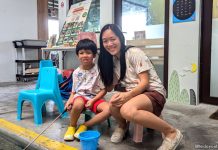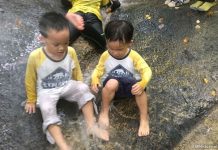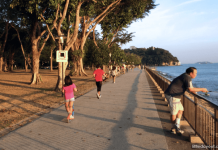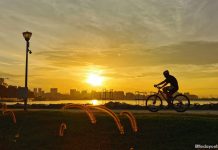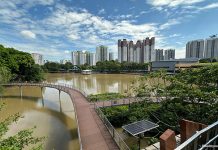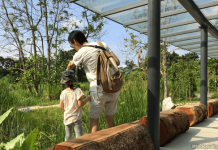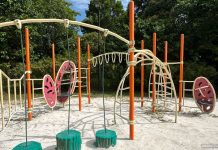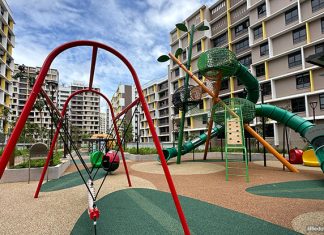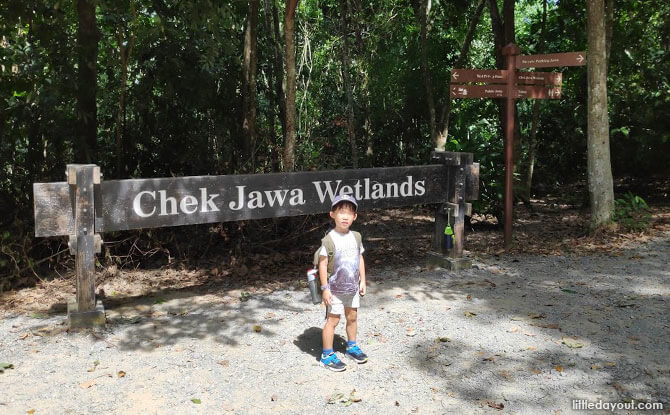
It was such a treat to be enjoying tranquility on a visit to Chek Jawa on Pulau Ubin on a boardwalk tour. Nature walks at Chek Jawa are often conducted by NParks and other nature conservation groups and for good reason. Chek Jawa is a natural showcase of six different habitats, making it amongst Singapore’s richest nature sites.
Getting to Chek Jawa at Pulau Ubin
Chek Jawa Wetlands is on the eastern end of Pulau Ubin and 3 km from the Pulau Jetty.
Getting to Chek Jawa from mainland Singapore requires two modes of transport.
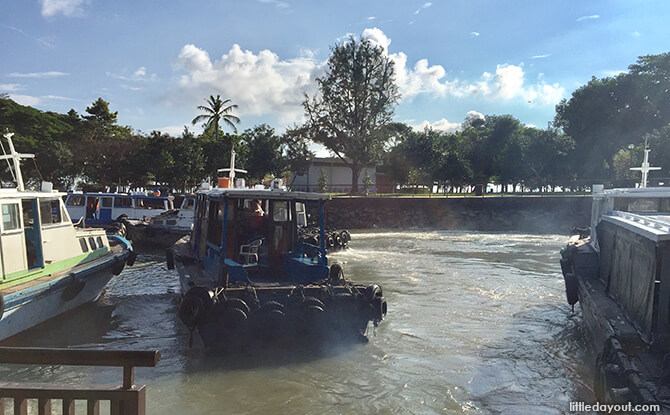
FREE FOR LITTLE DAY OUT PARENTS: Sign Up for a Free Trial with ACT 3 Academy to Find Out If Drama Classes are Right for Your Child
3 Recycling Adventures: Fun Ideas For Kids & Families
1:1 & Small Group English Lessons: How to Get Personalised, English Help
First was the bumboat from Changi Point Ferry Terminal to Pulau Ubin jetty was the first order of business. This can then be followed by either a bicycle ride, 40 minute stroll or a van taxi ride to reach Chek Jawa.
I opted for the fastest option as we underestimated the time taken to get onto a boat and we were running late for the nature walk we had signed up for.
As a tip, be prepared to wait at least 30 minutes to get onto the boat as boatmen typically only start their services with a minimum number of 6 to 8 passengers.
After disembarking the boat at Pulau Ubin, look out for the sign “van taxi” and the drivers waiting to pick up passengers. Each trip for the van taxi costs between $2 to $2.50 depending on the number of people boarding the van.
After a 10-minute van ride amidst the meandering trails of Pulau Ubin, you will reach the gate of Chek Jawa. For added adventure, keep a lookout for wild boars during the taxi ride as you might just spot them in the forests!
Mangrove Loop & Coastal Loop at Chek Jawa, Pulau Ubin
There is a Chek Jawa tour conducted by NParks with a NParks guide heading each group of 10 to 15 people.
The walk covers the entire boardwalk at both the Mangrove Loop and Coastal Loop with a distance of 1.1 km.
It was our third visit to Chek Jawa but the first time we had joined a walk with a guide! We had the honour of having Mr Alan Tan, who oversees Pulau Ubin’s coasts, to lead us.
He was very jovial, enthusiastic and pointed out the tidbits of Chek Jawa, peppered with a good dose of dad jokes.
Six Ecosystems at Chek Jawa Wetlands
There are six natural habitats at Chek Jawa wetlands, and probably why many tourists make the effort to visit Chek Jawa for its natural wonders.
Deemed Singapore’s richest shores, Chek Jawa has the sandy beach, rocky beach, seagrass lagoon, coral rubble, mangroves and coastal forest all meeting at one location.
As Pulau Ubin used to have a population of close to 3,000, there were homes lining the coast where Chek Jawa is located.
We saw old wells – covered up for safety as well as Muslim graves, showing that it used to be teeming with village life.
As we started on the boardwalk, we were treated to the calls of cicadas, birds and other creatures of the mangrove forest.
We saw the mud mounds made by mud lobsters, also home to crabs and other creatures all co-living in a mound that can reach down up to two metres in depth! You are in luck if you can see mound-owners out of its burrow.
It is easy to spot various plants such as the “Atap-Chee” plant or Nipah Palm more commonly known for its fruit found in Ice kachang. Keep a look out for various habitats which have been built specially for creatures such as bats.
One of the key features of the mangrove forest aside from the aerial roots is its “desalination system”.
The leaves of the mangrove trees help filter out the salt, which causes the salt to crystallise on the leaves.
Apart from protecting the shores from erosion, the mangrove forest is also home to wildlife like shrimps, fish, mudskippers, birds and other insects.
As we ventured to the Coastal Loop, it got a lot windier and the smell of the seawater was much stronger.
We could see the coastal forest, sandy and rocky beaches along this route as well as the changes in the landscape.
Alan, our guide, pointed out the fiddler crabs crawling on the ground which got us really excited as we watched male fiddler crabs scurrying about with their big pincers.
We also saw the sand bubbler crabs making little sand balls while eating.
While enjoying the sea breeze, we could see the seagrass lagoon which was teeming with seagrass and seaweed.
The plants signify a healthy marine ecosystem, which was important as sources of food to the marine life. We hear dugongs feed on the seagrass off Chek Jawa.
As this area is naturally formed and a fragile habitat, visitors interested to walk into the intertidal zone will need to either join a tour by NParks or apply for a permit. The best way to see the coral rubble up close is probably via an intertidal walk.
We were also lucky to see an otter family as well as a heron at the coast.
If the tide was higher, visitors might be able to spot dugongs or even sea turtles!
Watch your hats as you stroll along the boardwalk as they could fly away due to the strong sea breeze.
One more thing to take note of would be the part of the boardwalk with metal grills, which were meant to see the creatures below up close. Don’t let anything fall through the gaps!
A Tudor House and Frog Island near Chek Jawa Jetty
Upon exiting the boardwalk, the route brings visitors back to the forested area and to the Visitors’ Centre located at House No. 1.
House No. 1 was built in the 1930s as a retreat for Chief Surveyor of Singapore, Landon Williams.
It is Singapore’s only authentic Tudor-style house with a fireplace (and chimney)! It even has its own private jetty.
An English house in the midst of a tropical landscape was truly a sight to behold. Its chimney we hear is now home to a family of bats which would not be evicted.
House No. 1 offers more information about Chek Jawa wetlands and Pulau Ubin, with pictures of the flora and fauna as well as wildlife specimens on display.
Heading to the Chek Jawa jetty is a must!
It has a lovely view of the other islands of Singapore and a gorgeous view of House No. 1 nestled on Chek Jawa.
Looking ahead, you might even see a “frog island”.
Ubin legend tells that a frog, an elephant and a pig challenged one another to a race. All failed and were turned into rocks. The pig and elephant were turned into Pulau Ubin while the frog was turned into a frog-like boulder on the island just in front of House No.1.
Unfortunately, we had trouble spotting the frog which might have been eroded over the years.
A Dose of Tranquility at Chek Jawa Wetlands, Pulau Ubin
There was so much to see at Chek Jawa wetlands and we never realised it was such a unique spot.
We enjoyed the tranquility, scenery, flora and fauna and the very interesting information provided by our guide Alan.
The path was also quite kid-friendly, and a breeze for my five year old. We will be back, this time to explore the intertidal zone off Chek Jawa wetlands!
To learn more about Chek Jawa wetlands, you can visit NParks’ site here.
This story was first published in 2020.





